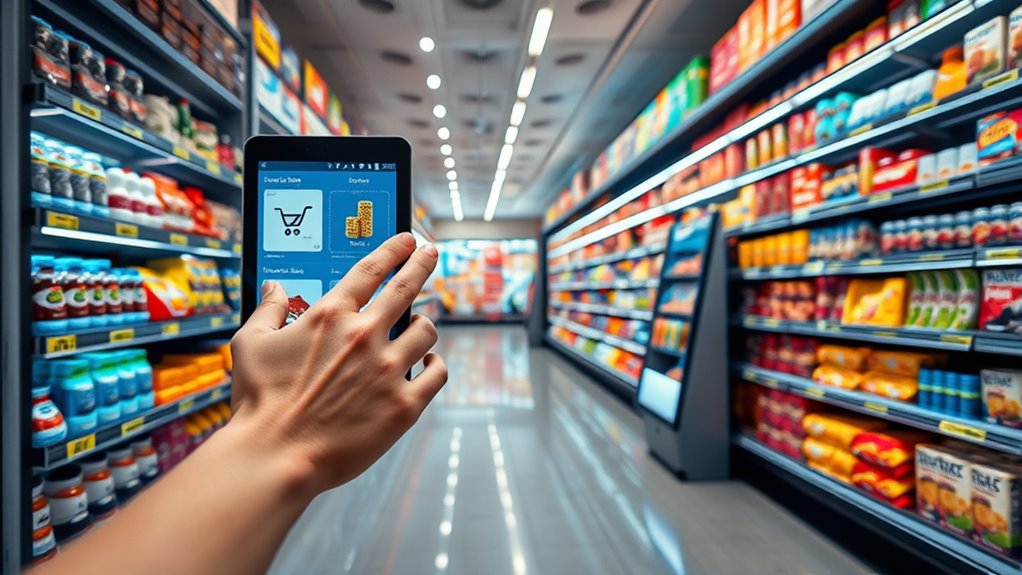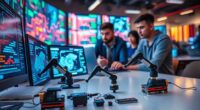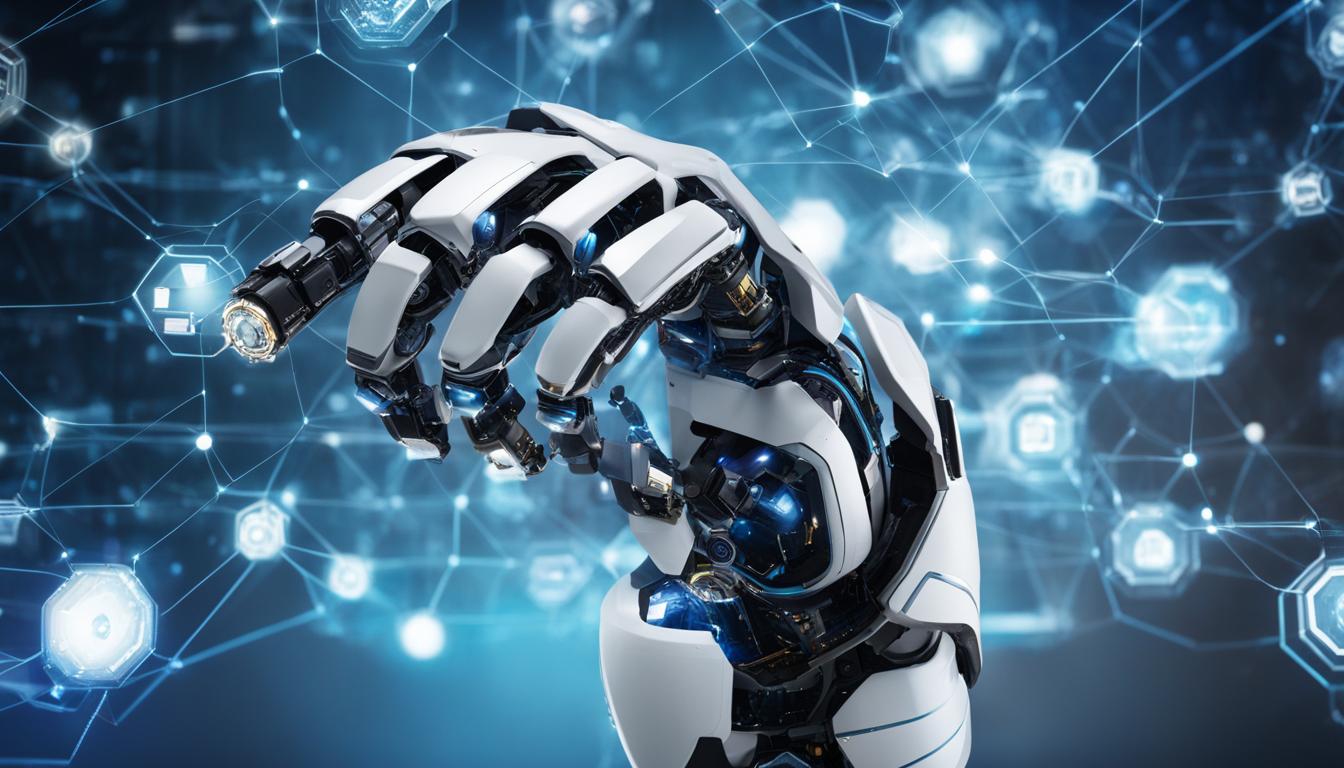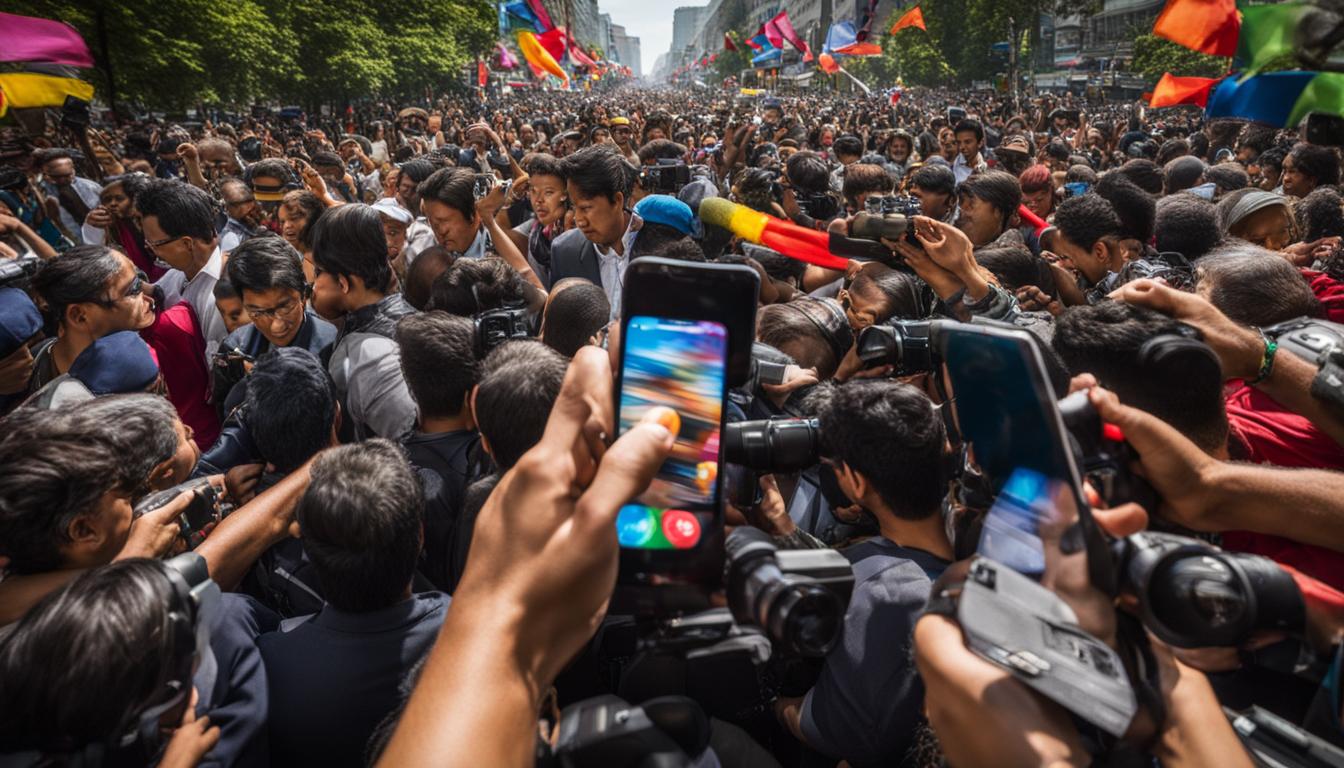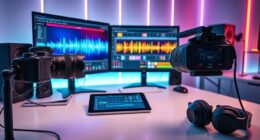Computer vision is revolutionizing retail inventory by enabling you to monitor stock in real-time, reducing manual counts and errors. It helps you track product levels automatically, prevent stockouts, and enhance security against theft or misplacement. By analyzing displays and shopper patterns, it also optimizes visual merchandising and demand forecasting. With seamless integration into your existing systems, this technology transforms your store into a smarter, more efficient retail space—discover how these innovations can empower your business.
Key Takeaways
- Computer vision automates real-time stock tracking, reducing manual errors and ensuring accurate inventory data.
- It enhances visual merchandising by monitoring display adherence and flagging underperforming setups.
- The technology detects stock discrepancies and unusual activity, strengthening security and loss prevention.
- Data from computer vision improves demand forecasting and stock optimization across multiple store locations.
- Seamless integration with POS and management systems enables data-driven, proactive retail operations.
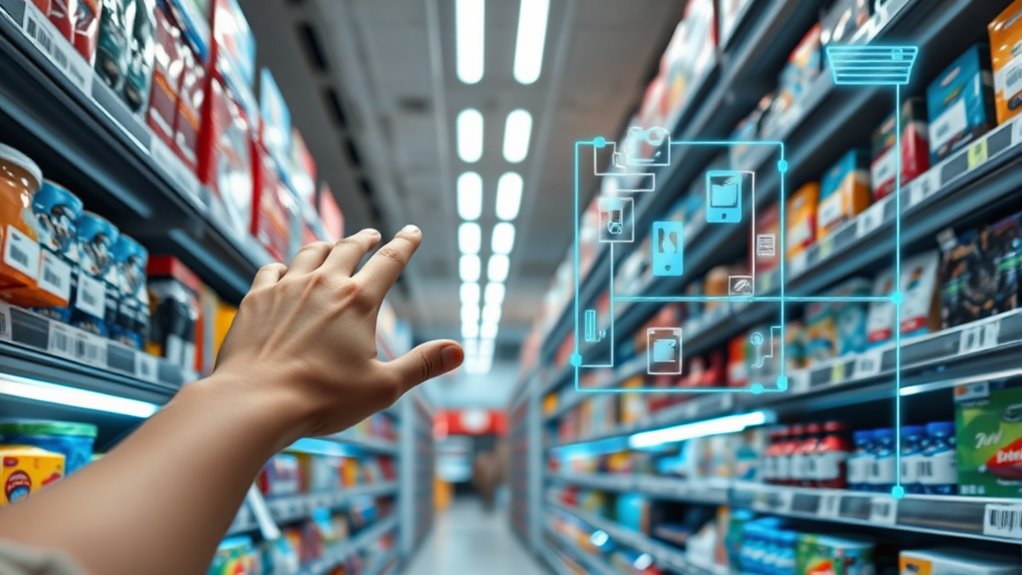
Computer vision is transforming how retailers manage inventory by enabling real-time, automated tracking of products. With this technology, you can say goodbye to manual counts and hello to more accurate, efficient stock management. Automated stocktaking becomes seamless as cameras installed in stores or on shelves continuously monitor inventory levels without human intervention. This not only reduces errors but also frees up staff to focus on customer service rather than tedious counting tasks. As images and video streams are processed instantly, you gain instant visibility into stock levels, ensuring you’re never caught off guard by empty shelves or overstocked aisles. This real-time data helps you make smarter decisions, optimize stock replenishment, and maintain a better shopping experience.
Visual merchandising also benefits greatly from computer vision. You can analyze how products are displayed and whether they’re arranged according to your planograms or promotional plans. If a display isn’t attracting enough attention, the system flags these issues immediately. You can then adjust visual merchandising strategies on the fly, ensuring attractive, organized, and effective product presentations. This constant feedback loop allows you to keep your store visually appealing and aligned with customer preferences, ultimately boosting sales. Furthermore, special events and themed breakfasts can be promoted more effectively by understanding customer preferences and foot traffic patterns through data insights provided by computer vision systems. Additionally, computer vision helps identify misplaced items or stock discrepancies instantly, so you can rectify issues before they impact sales or customer satisfaction.
As you implement automated stocktaking, you’ll notice a significant reduction in inventory shrinkage caused by theft, misplacement, or counting mistakes. The technology can detect suspicious activity or unusual stock movements, alerting you promptly. This proactive approach enhances store security and helps you maintain accurate inventory records. Plus, with continuous monitoring, you can accurately forecast demand and plan inventory more effectively, minimizing both excess stock and stockouts. These improvements lead to better cash flow management and increased profitability.
In addition, computer vision-powered systems integrate smoothly with existing POS and inventory management software, creating a unified platform for your retail operations. This integration enables you to access comprehensive data insights, track sales patterns, and optimize inventory levels across multiple store locations. It makes inventory management more proactive and less reactive, giving you the tools to stay ahead of trends and customer needs. Overall, adopting computer vision for automated stocktaking and visual merchandising transforms your retail environment into a more efficient, data-driven space where inventory is always optimized for maximum sales and customer satisfaction.
Frequently Asked Questions
How Does Computer Vision Handle Inventory Discrepancies?
When handling inventory discrepancies, computer vision streamlines inventory audits by continuously monitoring shelves and comparing actual stock with digital records. It provides real-time tracking, instantly flagging mismatches or missing items. You can rely on this technology to improve accuracy, reduce manual checks, and quickly address discrepancies. This proactive approach guarantees your inventory stays up-to-date, minimizing errors and enhancing overall retail efficiency.
What Are the Privacy Concerns With In-Store Computer Vision?
Think of in-store computer vision like a watchful eye, but it raises privacy concerns. You might worry about customer consent and how data security is preserved, especially with sensitive images or behaviors being monitored. Retailers must be transparent about data collection, secure it properly, and ensure customers agree to these practices. Otherwise, this technology could feel more like an invasion than an innovative tool for improving shopping experiences.
How Accurate Is Computer Vision in Different Lighting Conditions?
You might wonder how accurate computer vision is across various lighting conditions. It performs well in consistent lighting, but lighting variability can impact accuracy. To address this, sensor calibration becomes essential, ensuring cameras adapt to changes in brightness and shadows. Proper calibration helps the system maintain reliable detection and recognition, regardless of fluctuating lighting, making computer vision more effective for retail environments with diverse lighting scenarios.
What Hardware Is Required for Implementing Computer Vision?
Imagine your store’s heartbeat, powered by precise retail scanning and shelf monitoring. To make this pulse real, you need cameras with high resolution and good low-light performance, coupled with processing units like GPUs or edge devices. These hardware pieces act as the eyes and brain of your system, enabling seamless inventory tracking and real-time insights. With the right equipment, you transform your retail space into a smart, responsive environment.
Can Computer Vision Predict Inventory Shortages Before They Occur?
You can use computer vision to predict inventory shortages before they happen by analyzing real-time data and applying predictive analytics. It monitors customer behavior, such as purchase patterns and foot traffic, to forecast demand trends. This proactive approach helps you restock efficiently, reduce stockouts, and improve overall store management. By leveraging these insights, you guarantee your inventory aligns with customer needs, enhancing satisfaction and operational efficiency.
Conclusion
You might think inventory management is just about counting items, but computer vision proves otherwise. It’s revolutionizing retail, making stock tracking smarter and more accurate than ever before. Imagine a future where shortages vanish and shelves are perfectly stocked — all thanks to this technology. It’s not just a theory; it’s happening now. Embrace the change, because your shopping experience will be safer, smoother, and more reliable than you ever imagined.
